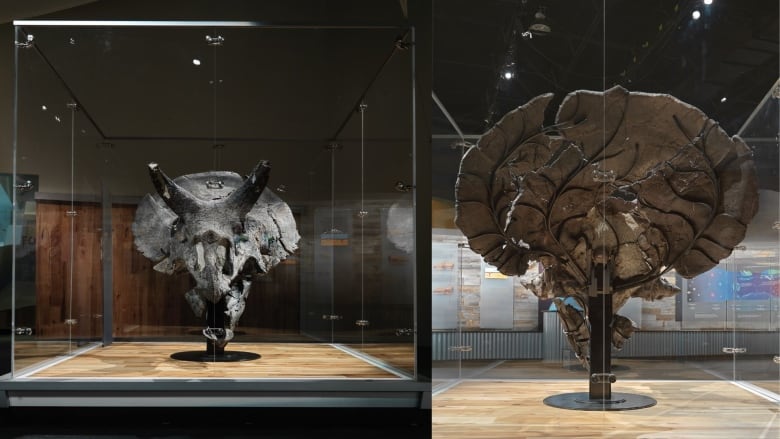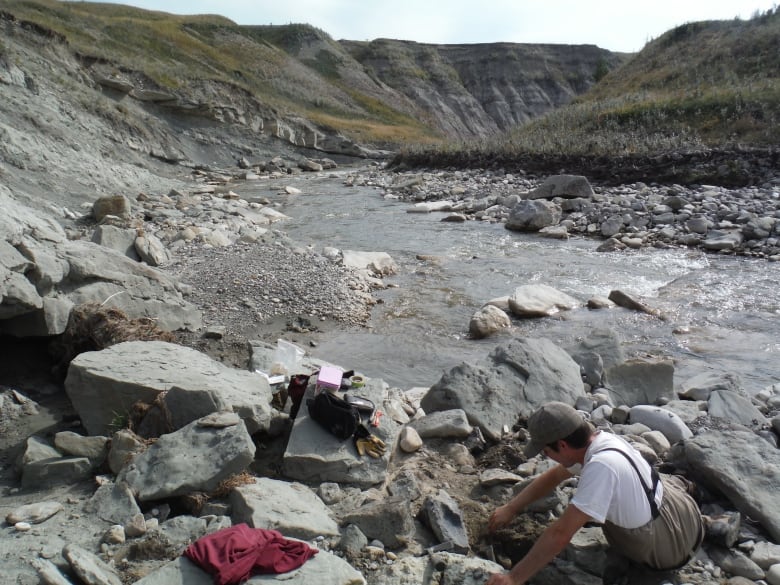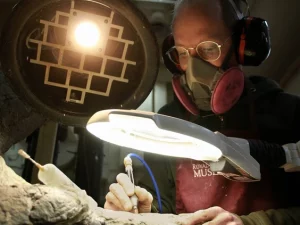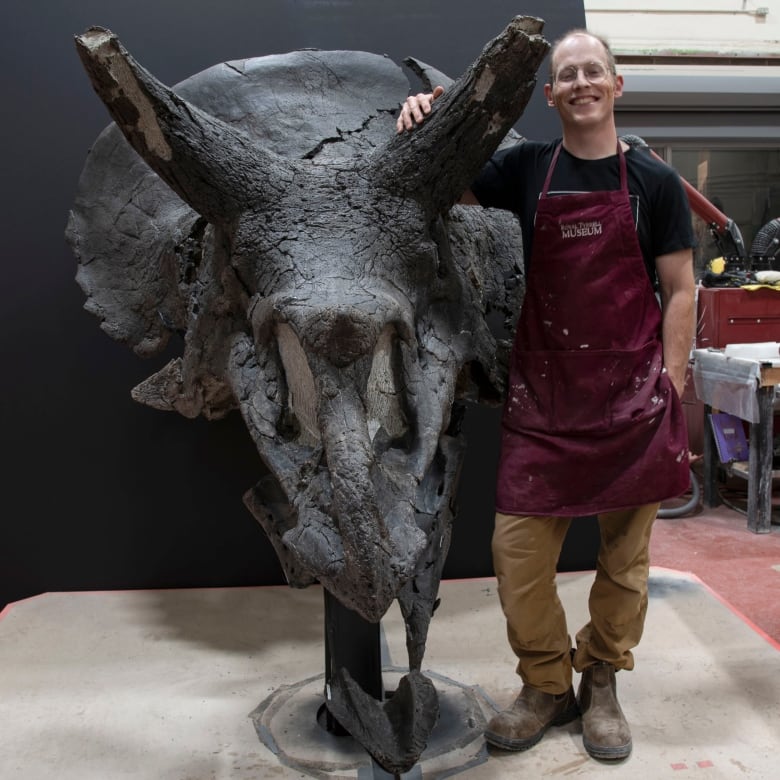
After seven years of work, the best preserved and most complete triceratops skull coming from Canada — also known as the “Calli” specimen — is on display for the first time since being found in 2014 at the Royal Tyrrell Museum in Drumheller, Alta.
A museum news release calls the specimen “unique” because of where it was discovered, the age of the rock around it, and how well it was preserved.
Following the floods that tore through Alberta about 10 years ago, the Royal Tyrrell staff were engaged in flood mitigation paleontology work when the triceratops skull was discovered in 2014.

Triceratops fossils are rare in Canada. This skull was found in the foothills of southwestern Alberta — an area where dinosaur fossils in general are uncommon — and nicknamed “Calli” after Callum Creek, the stream where it was discovered.
Transported via helicopter in giant, heavy chunks, the skull and most of the jaw pieces were extracted over the course of a month in 2015. The rest of the triceratops’ skeleton was not found.
Roaming the earth roughly 68 to 69 million years ago, the museum says this skull was buried in stages, evident by the fossilization process.

“Paleontologists know this because the specimen was found in different rock layers, and the poorly preserved horn tips suggest they were exposed to additional weathering and erosion,” reads a museum blog about the triceratops skull.
“The rest of the skeleton likely washed away,” noting that the lower jaws were found downstream.
From 2016 to 2023, Royal Tyrrell technician Ian Macdonald spent over 6,500 hours preparing this fossil, removing over 815 kilograms of rock that encased the skull. This triceratops skull is the largest skull ever prepared at the museum and its third largest on display.

According to Macdonald, it was obvious this was going to be a memorable project because of how “unusually beautiful” the specimen was.
‘It’s always been a very satisfying project to work on just because it’s such a high-quality specimen, like the bone is beautifully preserved,” he said.
“All the grooves and pits and ridges, like all that detail is lovely and it’s very ever-so-slightly deformed, but it’s essentially three-dimensional and stuff. So it’s been a very rewarding project the whole way through.”
He added that his work was far from straightforward and there were many challenges along the way.
“It wasn’t just simply taking the rock off the bone. There was a lot of other pretty technical aspects to figure out … and that was pretty fun.”

The triceratops is the largest and most famous ceratopsian, which were a group of beaked herbivorous dinosaurs alive during the Cretacious Period.
An “extraordinary specimen,” the triceratops skull is part of Fossils in Focus, the Royal Tyrrell Museum’s newest installation focusing on the latest finds and research, on display now.
Caleb Brown, curator of dinosaur systematics and evolution at the Royal Tyrrell Museum, believes that this is a fine addition to the museum’s collection.
“Triceratops is one of the most iconic dinosaurs that people think of when they think of dinosaurs. It’s one of the top three for sure,” he said. “We actually didn’t have an original triceratops until now. So this kind of fills in that gap … it’s the best-preserved, most complete triceratops specimen from Canada.”





